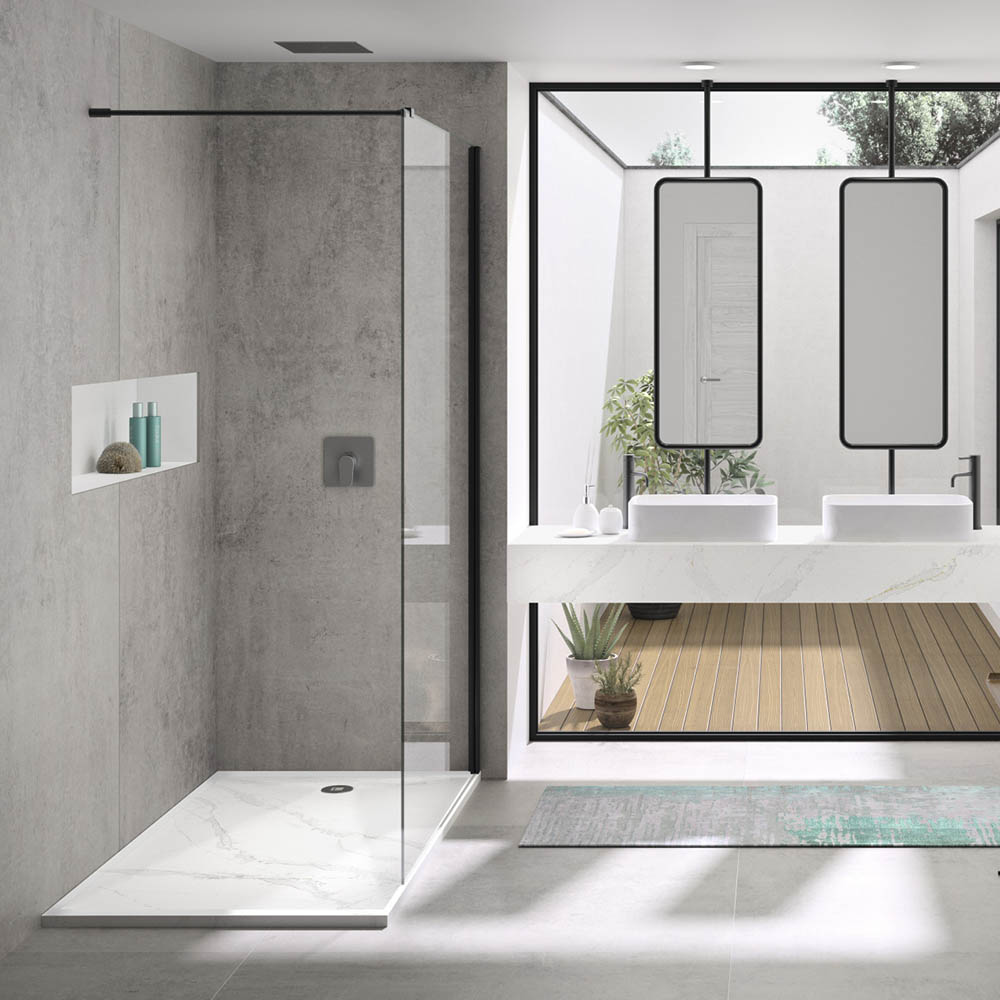Welcome to the fascinating realm of marble! With roots that go back to ancient civilizations, marble has long been considered a symbol of luxury and grandeur. But do you know what goes into turning a raw marble stone into an elegant piece? Let’s delve into the art and science of marble slab fabrication and discover how these beautiful slabs are created.

This article may interest you Marble or Granite for kitchen countertops
The Art and Science of Marble Slab Fabrication: A Comprehensive Guide
The process of marble slab fabrication is a marriage of artistry and technology. Each marble slab is a unique creation, much like a canvas that nature has painted. The role of the fabricator is akin to that of a skilled artist and scientist, who must bring out the slab’s inherent beauty while ensuring its quality and durability. A master fabricator is proficient not only in technical know-how but also in artistic flair, blending both to create a masterpiece.
Types of Marble
Marble comes in an array of types, each with its unique characteristics. From the classic white Carrara marble of Italy to the dramatic black Marquina from Spain, the options are virtually endless. Each type presents its challenges and opportunities when it comes to fabrication, making the choice of marble crucial to the final outcome.
The Importance of Quality Raw Material
No matter how skilled the fabricator, the end product will only be as good as the raw material. Therefore, the selection of quality raw material is of paramount importance. Several factors such as color, texture, and structural integrity are assessed before the marble slab is deemed worthy of fabrication.
The Marble Quarry: The Genesis of Every Slab
Every marble slab has a starting point: the quarry. Quarrying involves carefully extracting the marble from the earth, ensuring that its natural beauty and structural integrity are preserved. Modern machinery and skilled artisans come together in this initial yet crucial step of the marble slab’s life journey.
Key Machinery in Marble Fabrication
Machines like gang saws, bridge saws, and polishing machines play a vital role in shaping and finishing the marble slabs. These machines are operated by seasoned experts, who calibrate them precisely to ensure that each slab meets the highest standards of quality.
Steps of Marble Fabrication
Fabrication isn’t a one-step process; it’s a symphony of several stages. From initial cutting to detailed polishing, each step is crucial. Understanding these steps can provide valuable insights into what makes each marble slab a unique work of art.

Customizing Your Marble Slab
One of the most enticing aspects of marble is its ability to be customized. Whether you prefer a glossy finish or a more rustic, honed appearance, the fabricator can adjust the process to meet your specifications.
Importance of Expertise in Fabrication
Fabrication is an intricate process requiring a balance of technical know-how and artistic skill. The best results are achieved when the fabricator has an intimate understanding of the marble’s properties and the expertise to enhance them.
Skilled Craftsmanship
Artistic skills cannot be overstated in the process of marble fabrication. Master craftsmen bring years of experience to the table, sculpting each slab with finesse and sensitivity to its inherent qualities.
The Role of Technology in Fabrication
Technology serves as a powerful tool in the hands of skilled craftsmen. Advanced machinery not only speeds up the fabrication process but also ensures precision, allowing for complex designs and finishes that would otherwise be impossible.

Ensuring Safety Measures
Fabrication involves the use of heavy machinery and potentially hazardous materials. Therefore, safety measures are meticulously observed, ensuring the well-being of both the workers and the marble slabs.
Quality Assurance
Every slab goes through rigorous quality checks at different stages of fabrication. Quality assurance protocols are strictly adhered to, making sure the end product is nothing short of excellent.
Eco-Friendly Practices
As the demand for marble continues to grow, so does the importance of sustainable practices. Modern fabrication processes aim to minimize waste and use eco-friendly methods whenever possible.
Marble Finishes
Marble can be finished in several ways, including polishing, honing, and antiquing, each giving the slab a distinct look and feel. Your choice of finish can greatly influence the slab’s appearance and its suitability for different applications.
Applications of Marble Slabs
From countertops to flooring, the application of marble slabs is broad and versatile. The choice of marble and its finish can either make or break the aesthetic of your space.
Aesthetics of Marble
Marble is not just a stone; it’s a statement. The colors, patterns, and finishes you choose can profoundly impact the ambiance of your space, elevating it to a whole new level.
Maintenance Tips
While marble is undoubtedly beautiful, it requires regular maintenance to retain its luster. From cleaning methods to sealing, understanding the basics of marble care can go a long way.
Do-It-Yourself Marble Projects
Feeling adventurous? With the right tools and guidance, you can undertake small marble projects at home. However, it’s always advisable to consult with professionals for more complicated tasks.
The International Market for Marble
The marble market isn’t confined to one country; it’s global. Knowing the international trends can give you a broader perspective and more options to choose from.
Frequently Asked Questions
What is the most expensive type of marble?
The title for the most expensive type of marble often goes to Calacatta marble. Originating from Italy, Calacatta is prized for its rarity and high-quality. It has a pure white background with dramatic, broad veining that can range from gold to brown to beige. The scarcity of this marble adds to its cost. Additionally, the demand is often higher than the supply, making it a luxury item that can fetch a high price in the market.
How long does the fabrication process take?
The time required for the fabrication process can vary significantly depending on the complexity of the project, the type of marble being used, and the specific requirements of the customer. Generally speaking, simpler projects might take a few days, whereas more intricate or large-scale projects can take weeks. It’s always best to consult with your chosen fabricator for a more accurate time estimate tailored to your specific needs.
Can I customize my marble slab?
Absolutely! One of the beautiful aspects of marble is its adaptability and the ease with which it can be customized. You can select everything from the finish (polished, honed, etc.) to the specific cuts and dimensions. Some fabricators even offer design services to help you visualize your project before it begins. However, it’s worth noting that customization can influence both the cost and the time required for the project.
Is marble eco-friendly?
Marble is a natural stone that doesn’t require synthetic materials or harmful chemicals for its production, making it more eco-friendly than some other building materials like plastics. However, the quarrying and fabrication processes do consume energy and can result in waste. Many fabricators are moving towards more sustainable practices, including water recycling and using every piece of the slab to minimize waste. So, while not entirely eco-friendly, efforts are being made to minimize marble’s environmental impact.
What are the most common applications of marble slabs?
Marble slabs are incredibly versatile and can be used in a variety of applications. Some of the most common include:
- Kitchen countertops
- Bathroom vanities
- Flooring
- Wall cladding
- Staircases
- Fireplace surrounds
The application often dictates the type and finish of the marble used. For example, a honed finish is often preferred for floors to provide more grip, whereas a polished finish might be chosen for countertops to highlight the stone’s natural beauty.
How should I maintain my marble surfaces?
Marble, while durable, is also porous and sensitive to acids. Maintenance generally involves regular cleaning with a pH-neutral cleaner and immediate cleanup of any spills to prevent staining or etching. It’s advisable to seal your marble surfaces at least once a year to keep them resistant to damage. Regular dusting and mopping can also go a long way in maintaining the stone’s natural beauty. For heavy stains or etching, it might be best to consult a professional for restoration services.
Understanding how to care for your marble can significantly prolong its life and keep it looking as luxurious as the day it was installed.
Conclusion
The journey of a marble slab from quarry to your home is one of meticulous craftsmanship and advanced technology. Understanding The Art and Science of Marble Slab Fabrication not only enhances your appreciation for this luxurious stone but also helps you make more informed choices, whether you are a homeowner, architect, or an interior designer.

